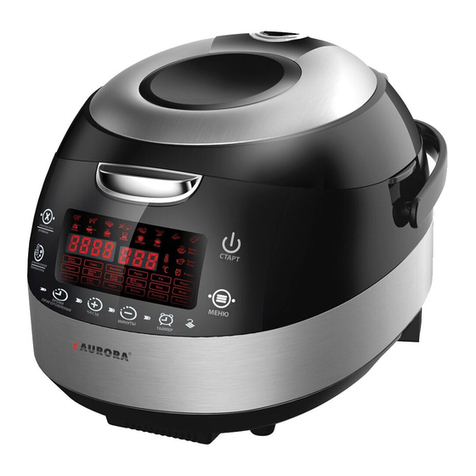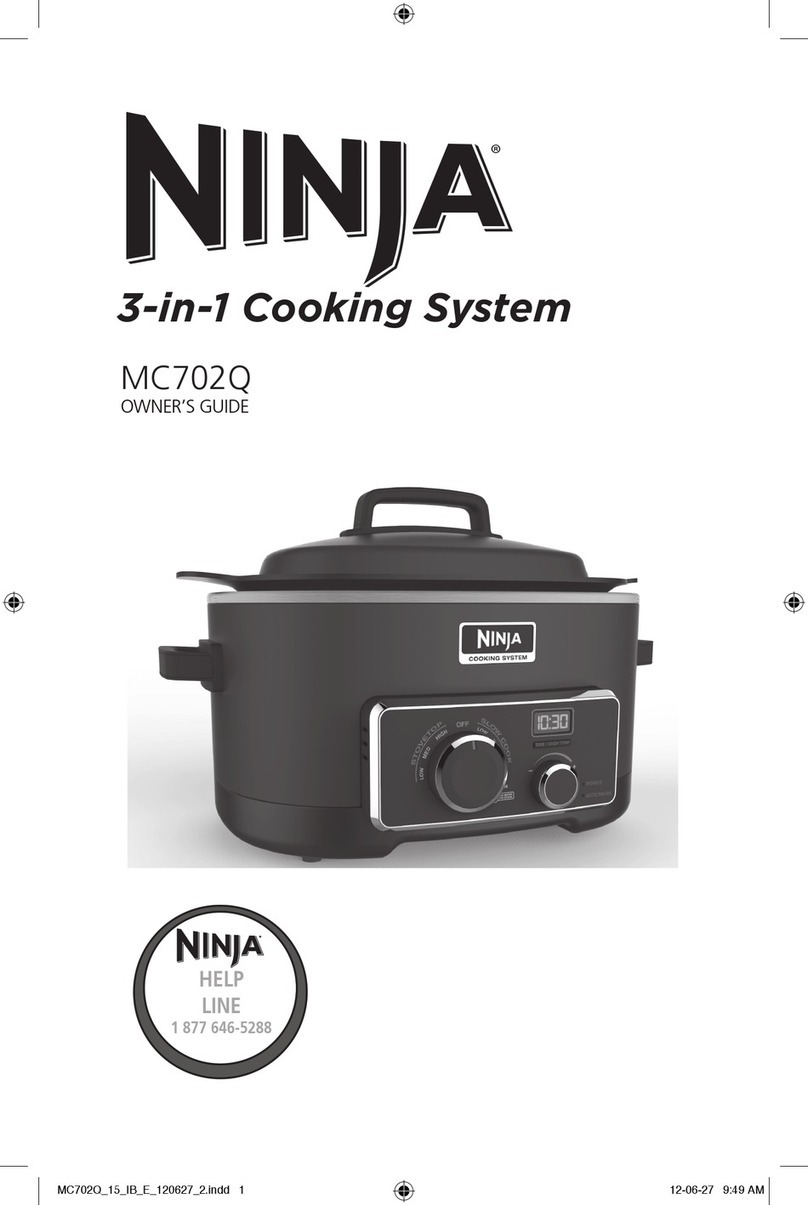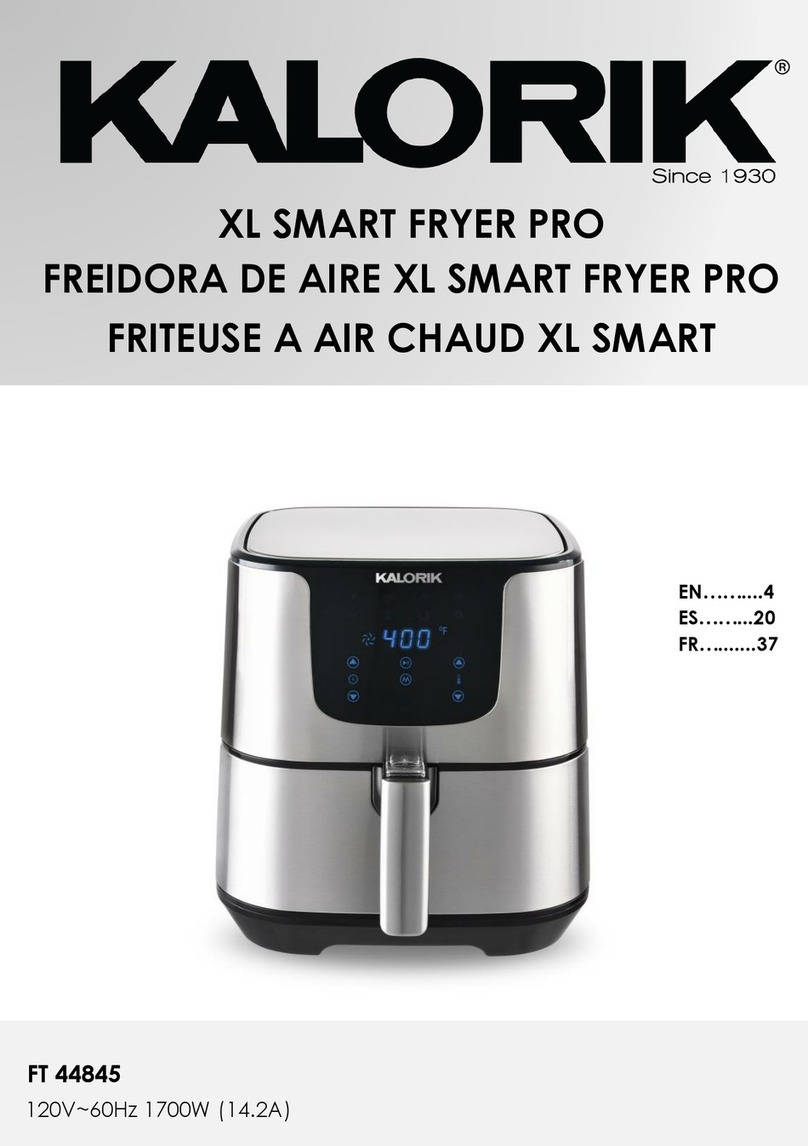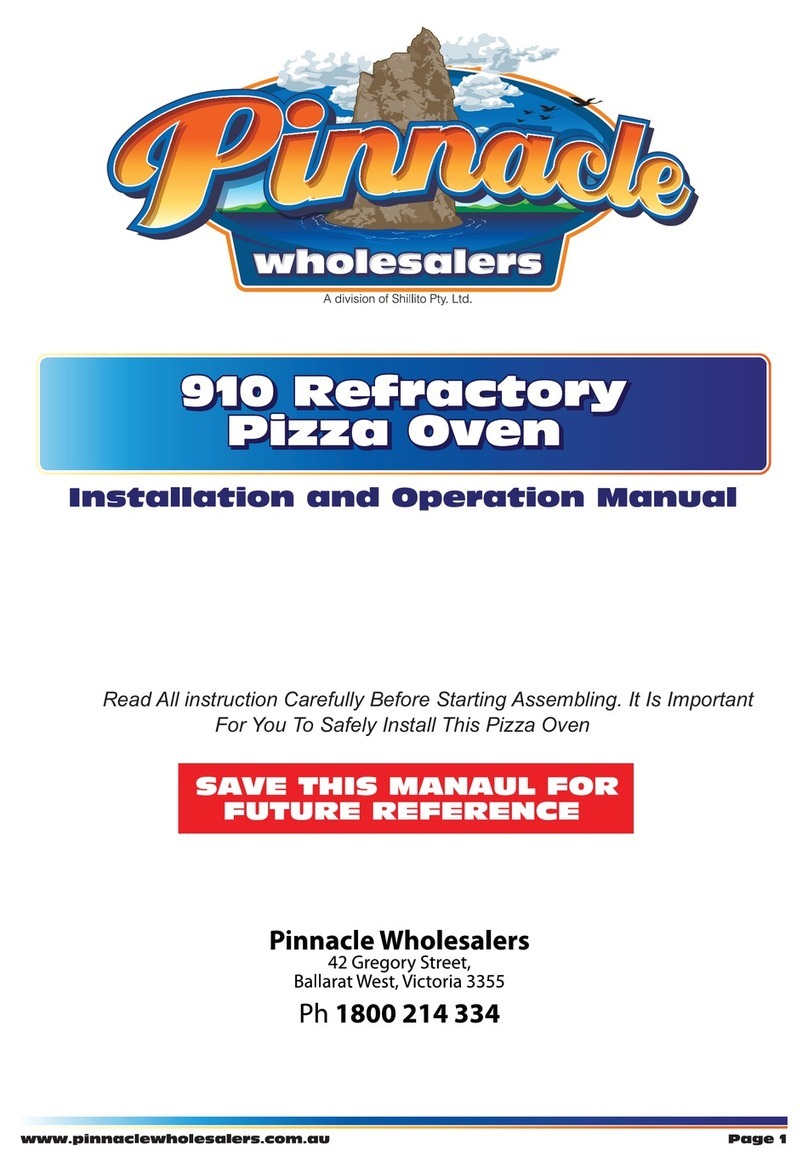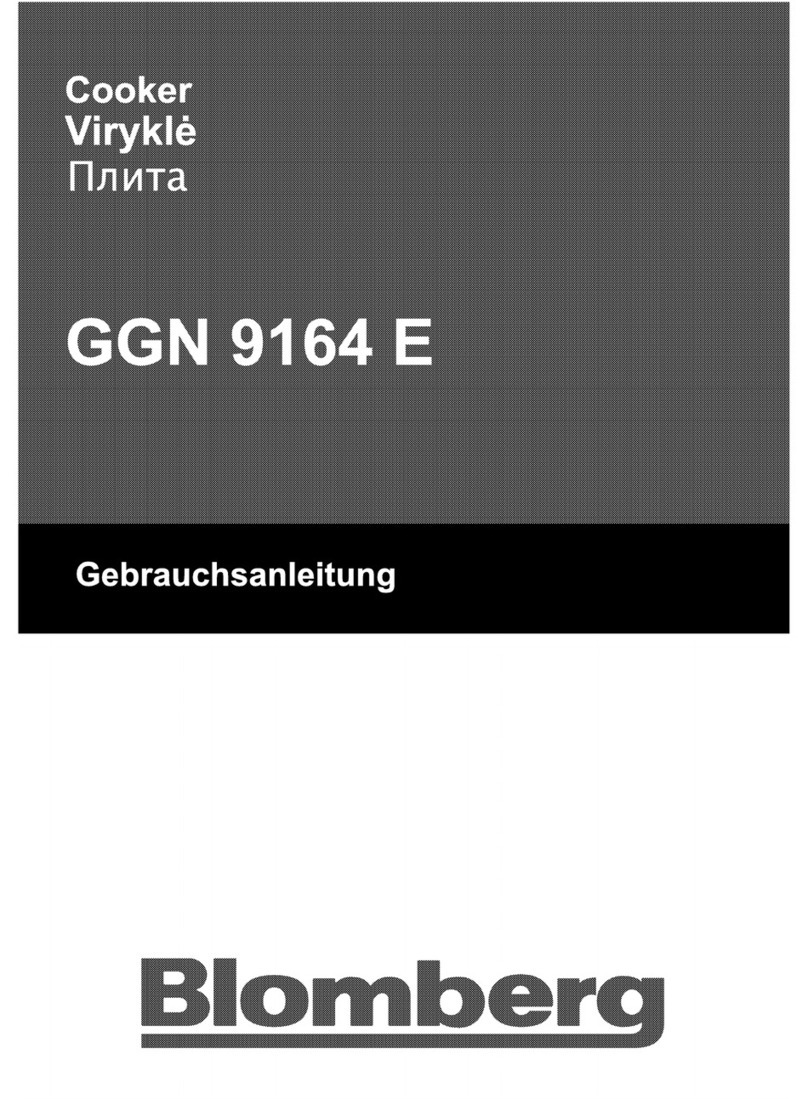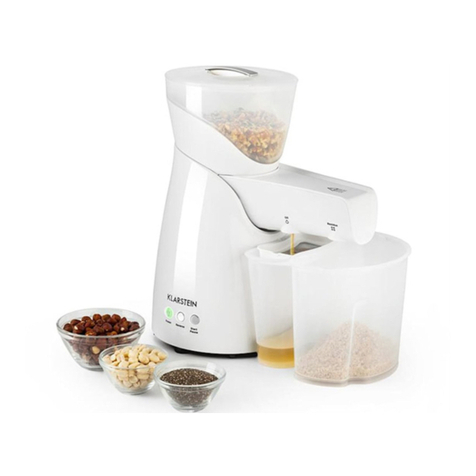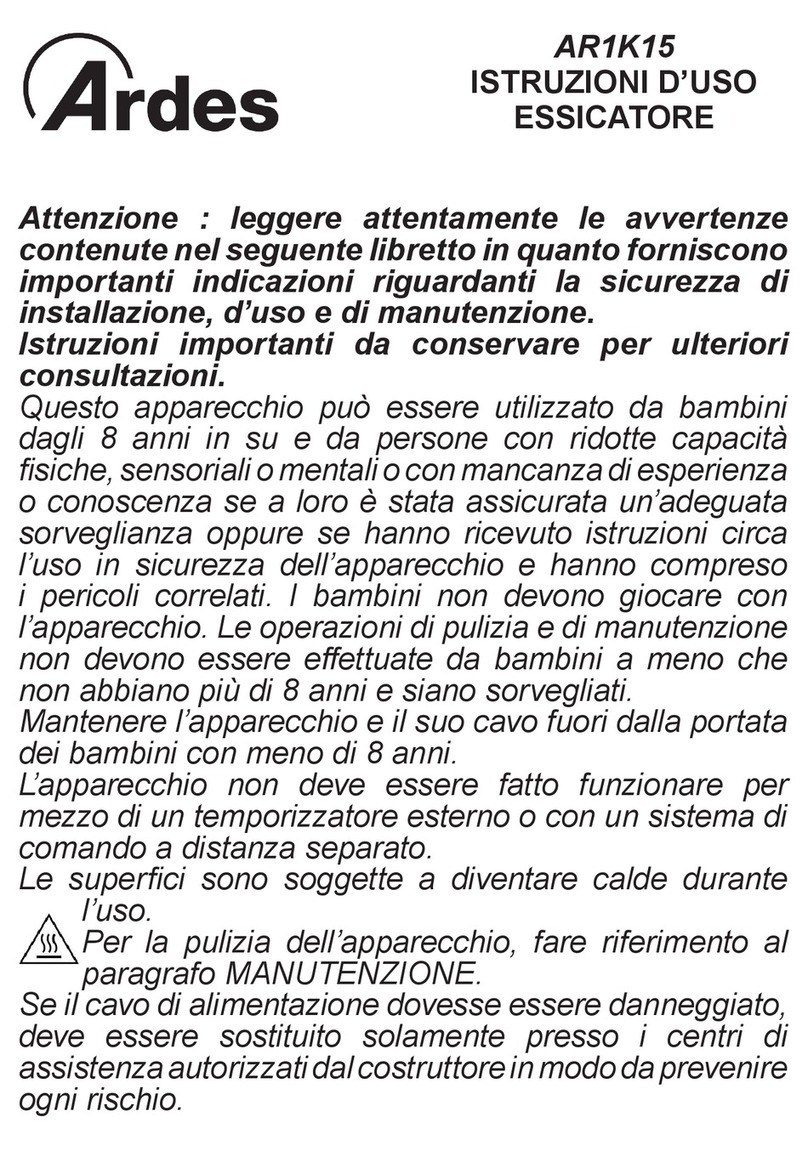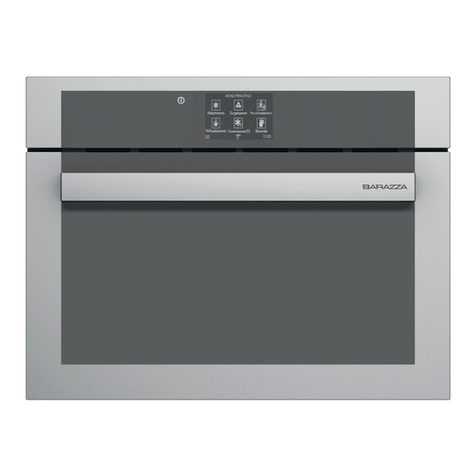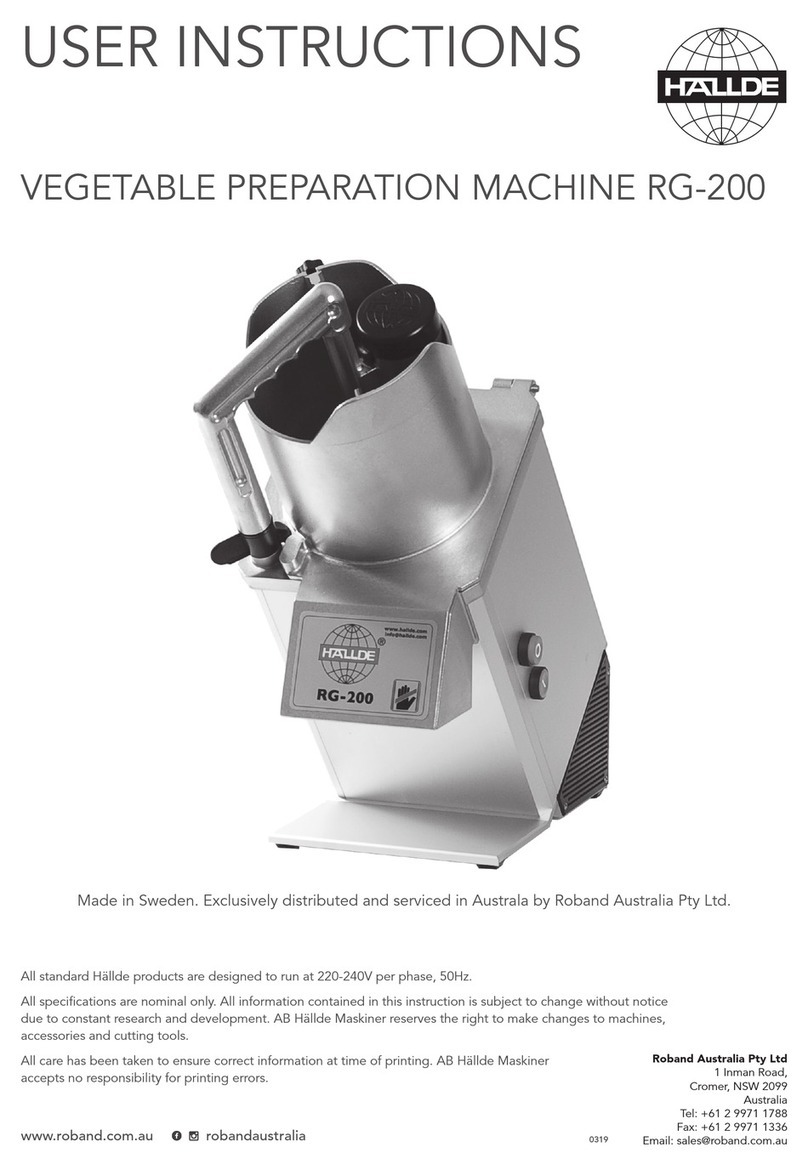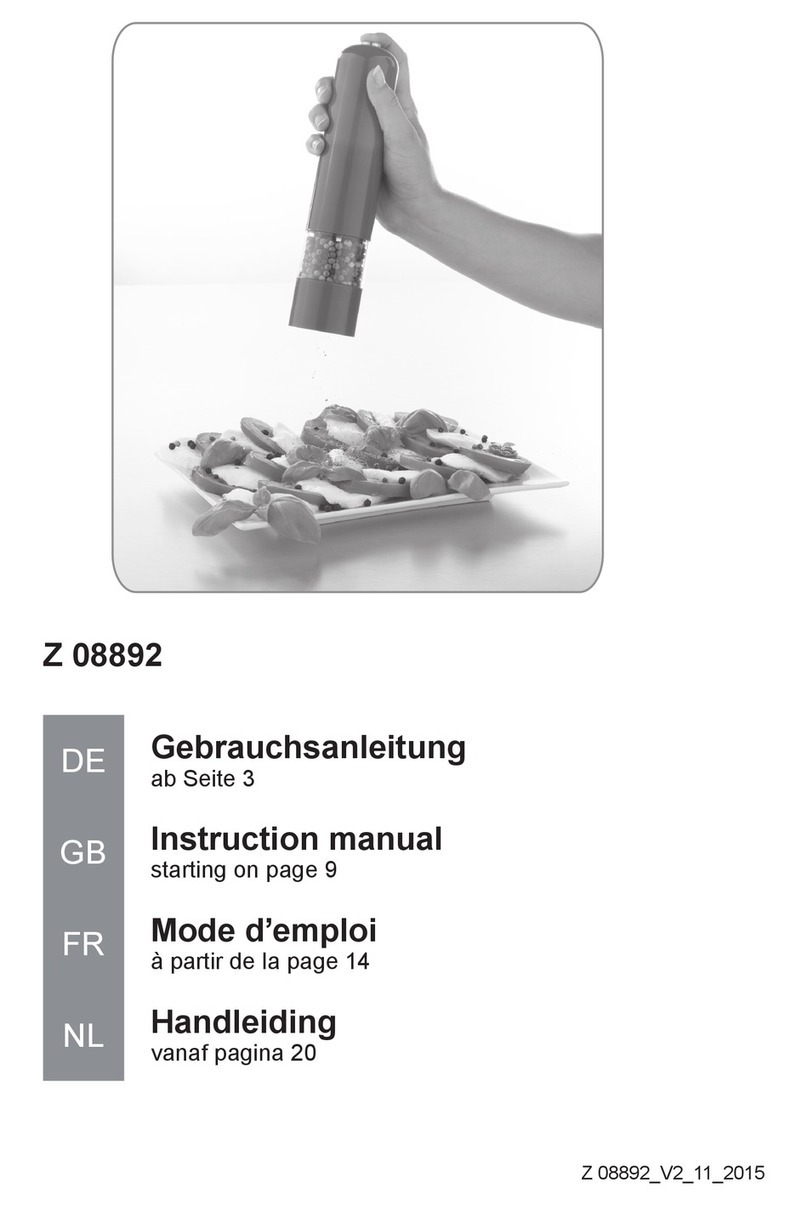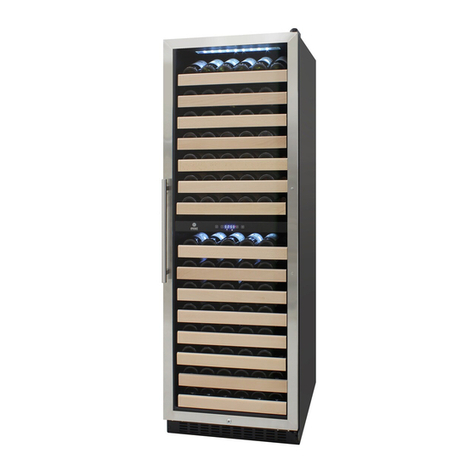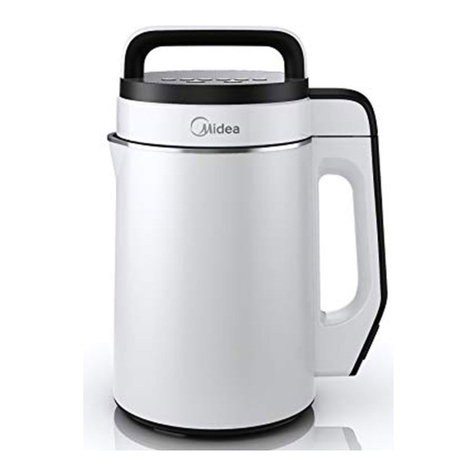MAD MILLIE Artisan User manual

Artisan Cheese Kit Instructions
2
Mad Millie kits and equipment are designed to make it fast and simple
for you to create beautiful, artisan food in your own home.
For more kits and consumables, along with some helpful
tips and how-to videos, visit
www.madmillie.com Quark, Cream Cheese, Light Cream Cheese, Cottage Cheese,
Ricotta, Ricotta Salata, Mozzarella, Farmhouse Butter, Chèvre Frais,
Halloumi, Feta, Goat’s Feta, Goat’s Milk Spreadable Cheese, Colby,
Cheddar, Caerphilly, Havarti, Wensleydale and Mascarpone.
1-5 HOURS per recipe
(not including draining and ageing time)
Approx time

Artisan Cheese Kit Instructions
1
Perfect for
Beginners!
The ultimate kit for cheese lovers, this
Artisan’s Kit has everything you need
to create fresh artisan cheeses, like
feta, halloumi, cream cheese, cottage
cheese, ricotta and mozzarella as well
as hard cheeses like cheddar, colby
and Wensleydale. Just add your choice
of fresh milk!
You will find in-depth information
on the basic cheese making process
on our website.
www.madmillie.com
Watch our YouTube video if possible before starting.
They say a picture is worth a thousand words!

Artisan Cheese Kit Instructions
2
Your Artisan Cheese Kit
Pipette
Used to measure small quantities of
calcium chloride.
Curd Knife
A long blade knife used for cutting
the curd.
CULTURE & ENZYME MEASURING SPOONS
These tiny measuring spoons are great for
measuring out small amounts of culture
and enzymes. Tad is approx 1/4 tsp, dash
is approx 1/8 tsp, pinch is approx 1/16 tsp,
smidgen is approx 1/32 tsp, drop is
approx 1/64 tsp.
Cheese Cloth
Cheese cloth is used to help separate the
curds from the whey. It is often used to line
colanders and cheese moulds to ensure that
no curds escape and are wasted.
YOUR KIT CONTAINS
.Shelf stable Mesophilic Starter Culture
.Vegetarian rennet tablets
.Hard cheese press
.Cheese wax and melting bowl
.Cheese mat
.Square feta moulds (2)
.Small ricotta basket with container
.Pipette
.Thermometer
.Artisan’s cheese salt
.Calcium chloride
.Cheese cloth
.Citric acid
.Curd knife
.Culture measuring spoons
.Draining spoon
.Annatto cheese colourant
.Steriliser*
*Not available in USA
Specialised Cheese Making Equipment
Cheese Mat
Used to keep cheese elevated from whey
while the curds are draining inside the
cheese mould.
Thermometer
The thermometer will ensure accurate
monitoring of the milk temperature.
When measuring the temperature make sure that the two indentation points found
on the lower half of the thermometer probe are fully submerged in the liquid. If
they’re not, you will not obtain an accurate temperature reading.
How to... USE YOUR
THERMOMETER
Cheese cloth can be reused. Soak your used
cheese cloth in warm water to rinse out
any left over milk residue, then sterilise by
boiling for 5 minutes.
Hygiene tip CHEESE
CLOTH

Artisan Cheese Kit Instructions
33
Square Feta Moulds
Square feta cheese moulds are used to
drain whey from the cheese and create the
square feta shape.
RICOTTA BASKET & CONTAINER
Provides a mould to shape the ricotta and
let the whey drain from the ricotta curds.
The container collects the whey and is
great to store the ricotta in.
Draining Spoon
A large serving spoon with holes for
stirring and spooning out curds into a
mould or colander.
MESOPHILIC STARTER CULTURE
These are the bacterial starter cultures
which acidify the milk and cause it to
curdle. This process leaves you with solids
(curds) and liquid (whey). The curds are
what form your fresh cheese. These cultures
are living organisms. Although shelf stable
at room temperature, to prolong their life
and milk acidification ability, please store in
the freezer. The cooler you are able to store
them, the longer they will remain active.
NOTE:Refer to sachet for dosage quantities.
Vegetarian Rennet
Rennet is used to speed up the process of
forming curds and whey. It also aids in
forming a tighter curd. The rennet supplied
in this kit is suitable for vegetarians. Half
used rennet tablets must be stored in an
air tight container or wrapped in cling
film. Rennet tablets are shelf stable for
approximately three years from manufacture
when stored at dry ambient temperatures.
Calcium Chloride
The pasteurisation and homogenisation
process which store bought milk must go
through is responsible for lowering the
calcium content naturally present in milk.
Adding calcium chloride helps restore
some of the lost calcium and helps ensure
you get a good, strong curd and a higher
yield of cheese.
Citric Acid
This is used to acidify the milk and causes
the separation of the solids (curds) from the
liquid (whey).
Artisan’s Cheese Salt
Cheese salt is salt which contains no
iodine. Iodine may disable your
bacterial starter cultures and prevent
them from working.
Annatto
Natural colourant used to add a yellow/
orange colour to your hard cheese.
Cheese Press
Used to press your cheese.
STERILISER
To sterilise all equipment which comes into
contact with the milk. Refer to label for
usage instructions.
If your mould is warped, simply immerse
it in warm water (50 - 60°C or 122 - 140°F)
for 10 minutes to soften plastic before
reshaping it with your hands and
allowing to cool.

Artisan Cheese Kit Instructions
4
Additional kitchen
equipment you will need:
ColandeR
Used for draining whey from curds. A
colander with feet works best so that the
curds are elevated and not sitting in whey.
Good Quality Pot
This should be large enough in order to hold
the amount of milk your recipe calls for. Pots
used should have a thick base to prevent the
milk from scalding or sticking to the bottom
of the pot.
WATER BATH
You will need a way to keep your milk at
the correct temperature over several hours.
This can be done by leaving the pot on a
warm, turned off stove or putting your pot
of milk into a sink and surrounding it with
warm water (slightly higher than the milk
temperature). Or by putting your pot into a
closed chilly bin or cooler and filling
the surrounding area with water.
If you are using a pot in a sink
of warm water, you will need
to check the milk temperature
every few hours and top the
sink up with warm water
to help maintain the
milk temperature.
4

Artisan Cheese Kit Instructions
5
Important Steps
Pressing a Cheese
All hard cheeses must be pressed.
This process compacts the cheese and helps
get rid of the moisture, causing the cheese
to develop the harder, dryer texture which
hard cheeses are known for.
Using your Mad Millie Cheese Press
STEP 1:
Scoop your cheese curds into the mould
component of the cheese press (you may
need to line the mould with a cheese cloth).
STEP 2:
Place the disk on top of the curds, flat side
down with the indent for the screw to the
top. Fold the cheese cloth on top of the disk,
making sure it is clear of the screw.
STEP 3:
Place the top of the press on top of the
mould. Twist the lid so that the lid locks
into the mould.
STEP 4:
Start screwing the knob in order to get the
metal rod to put pressure on the pressing
disk. The scale will pop up and indicate
how much pressure is being applied to the
cheese. Refer to your recipe for the amount
of pressure that needs to be applied. The
amount of pressure varies between recipes.
Reading youR Scale
The scale starts at 0 and goes up to 20.
Note: While the cheese is being pressed,
the pressure may need to be readjusted to
account for the cheese reducing in size.
Brining a Cheese
Many hard cheeses must also be soaked
in a brine solution after they have been
pressed. This adds flavour, preserves the
cheese and also draws out some
additional moisture.
Recipe for Saturated Brine
Solution 25%:
.Bring 1.5 L (1.5 US qt) of water to the boil
before stirring in 375 g (13.2 oz) of
cheese salt.
.Once cool, stir in 1.5 tsp of white vinegar
to balance the pH.
.Always brine your cheese with the brine
and cheese being at room temperature.
.Brine can be kept and reused, just boil
and allow to cool before reusing.
5
10
15
20
= 5 kg (11 lb)
= 10 kg (22 lb)
= 15 kg (33 lb)
= 20 kg (44 lb)

Artisan Cheese Kit Instructions
6
Waxing a Cheese
Many hard cheeses must be waxed prior
to ageing. This process helps retain the
moisture within the cheese, and protect
it from external mould while the cheese
is aged.
Wax should be both melted and stored in
the wax bowl provided in this kit.
Steps in Waxing Cheese
.Place the metal bowl full of wax in a pot
with boiling water to melt the wax.
.Once the wax has melted, allow the wax
to heat a little longer so that you get the
wax as hot as possible. This will ensure
that the wax is sterile, and also kills any
bacteria which may be present on the
surface of the cheese.
.Dip the cheese halfway into the wax
for 5 seconds before removing.
.Wait a few seconds for the wax to cool,
then, turn cheese around and dip the
other side into the wax.
.Repeat until the cheese is covered in
wax, leaving no holes. This should take
approximately 2 - 3 dips.

Artisan Cheese Kit Instructions
7
Makes approx: 300 g (10.5 oz)
Find these recipes
on YouTube.com
Diculty: Very easy
Let’s get making some cheese!
Quark
Quark is a quick and easy cheese to make
which is loved for its nutritional value.
Quark is a high protein and low fat food
with lots of versatility. It is particularly
popular in northern parts of Europe where
they eat it with fruit for breakfast or dessert,
herbed and spread on grain bread for
lunch and then use it as a low fat creamy
sauce option on potatoes for dinner!
INGREDIENTS
.1 L (1 US qt) of full fat
homogenised milk
.1/4 sachet (1 drop tsp) of
Mesophilic Starter Culture
EQUIPMENT
.Pot
.Thermometer
.Cheese cloth
.Colander
.Draining spoon
Sterilising all your equipment is vital with cheese making. Sterilise your cheese
cloth, pots, draining spoon and anything else that comes into contact with the milk
just before using. Wipe your bench surfaces with an antibacterial cleaning product
before getting started.
Hygiene tip
METHOD:
STEP 1:
Inoculating the Milk
.Thoroughly sterilise equipment with
steriliser (see bottle instructions for use).
If not included, use baby bottle steriliser
or boiling water.
.Pour milk into a pot and heat on a stove
to 30°C (86°F) before adding the starter
culture. Ensure the two indentation points
on the lower half of your thermometer are
fully submerged in the milk when reading
the temperature. Leave over night (12 - 24
hours) to thicken at 20 - 30°C (68 - 86°F).
STEP 2:
Draining THE CHEESE
.After 12 - 24 hours, drain the cheese in
a cheese cloth lined colander until the
thickness is to your liking. This could be
as thick as Greek style yoghurt, or until
it is firm and spreadable like cream cheese.
STEP 3:
FlavoUring THE CHEESE
.Add chopped herbs for a savoury spread,
or mix with milk for a creamy, yoghurt
texture which can be eaten with fruit for
breakfast and/or dessert. Quark is great
for using in baking and is also the main
ingredient used in German baked
cheesecakes.

Artisan Cheese Kit Instructions
8
Makes approx: 300 g (10.5 oz)
Cottage
Cheese
Cottage cheese can be eaten by itself, with
fruit, on toast or in salads.
The term “cottage cheese” originated
because the simple cheese was usually
made in cottages from any milk left over
from making butter. The unpasteurised milk
would sour itself when left in a warm place
overnight. Cottage cheese was then made
from this soured milk the next day.
Diculty: Very easy
INGREDIENTS
.2 L (1/2 US Gal) of full fat,
homogenised milk
.1/2 sachet (1 smidgen tsp) of Mesophilic
Starter Culture
.1/2 tablet of rennet diluted in 1/8 cup
(35 ml) of cool, non-chlorinated water.
NOTE: Rennet will not dissolve fully.
Stir just before adding to the milk.
.1 ml of calcium chloride. Measure using
your pipette
.Cheese salt (to taste)
.Herbs (optional, to taste)
EQUIPMENT
.Pot
.Curd knife
.Draining spoon
.Thermometer
.Colander
.Cheese cloth
.Pipette
METHOD:
STEP 1: Inoculating the Milk
.Thoroughly sterilise equipment with
steriliser (see bottle instructions for use).
If not included, use baby bottle steriliser
or boiling water.
.Pour milk into a pot and warm the milk
using the stove to 22°C (72°F) before stirring
in calcium chloride. Ensure the two
indentation points on the lower half of
your thermometer are fully submerged
in the milk when reading the temperature.
.Stir in the starter culture.
.Add diluted rennet and stir in an up and
down motion for 1 minute.
.Cover and leave to set at 22°C (72°F) for
4 - 8 hours, or until milk is set firmly. (See
water bath p.4).
STEP 2: CUTTING THE CURDs
.Using your curd knife, cut the curd into
3 cm (1“) cubes and allow to sit
undisturbed for 10 minutes.
STEP 3: COOKING THE CURDs
.Slowly increase the heat until the
temperature reaches 43°C (110°F). Continue to
stir to prevent curds from clumping together.
.Maintain temperature at 43°C (110°F) for 20
minutes or until the curds have shrunk and
are firm enough so that they no longer have
a soft interior.
.Turn off heat and let the curds settle to the
bottom of the pot for 5 minutes.
STEP 4: DRAINING THE CURDS
.Pour off whey and pour curds into a
cheese cloth lined colander. Tie the
corners of the cheese cloth together to
form a bag, hang, and leave to drip
drain for several minutes.
.Open bag and put curds into a bowl.
.Break the curds up and add salt or herbs
to taste if desired. For a creamier cottage
cheese, add cream, or try adding a few
tablespoons of quark for a lower fat version.
.Can be stored for up to 1 week covered
in the fridge.

Artisan Cheese Kit Instructions
9
Makes approx: 400 g (14 oz)
Cream
Cheese
This is a soft cream cheese which is
great with added herbs and salt.
Diculty: Very easy
INGREDIENTS
.2 cups (500 ml) of fresh cream (40% fat)
.2 cups (500 ml) of full fat,
homogenised milk
.1/4 sachet (1 drop tsp) of Mesophilic
Starter Culture
.1/2 tablet of rennet dissolved in 1/8 cup
(35 ml) of cool, non-chlorinated water
NOTE: Rennet will not dissolve fully.
Stir just before adding to the milk.
.0.5 ml of calcium chloride.
Measure using your pipette
.Cheese salt (to taste)
.Herbs (to taste)
EQUIPMENT
.Pot
.Large draining spoon
.Cheese cloth
.Pipette
.Colander
.Thermometer
METHOD:
STEP 1:
Inoculating the Milk
.Thoroughly sterilise equipment with
steriliser (see bottle instructions for use).
If not included, use baby bottle steriliser
or boiling water.
.In a pot, combine milk and cream.
.Warm to 22°C (72°F) using the stove.
Ensure the two indentation points
on the lower half of your thermometer
are fully submerged in the milk when
reading the temperature.
.Stir in 0.5 ml of calcium chloride.
.Add the starter culture and rennet.
.Mix thoroughly and allow to set at
approx 20°C (68°F) for 24 hours.
STEP 2:
Draining THE CHEESE
.With the draining spoon, scoop the
curds into a cheese cloth lined
colander. Tie the corners of the cheese
cloth into a knot and hang the bag to
drain for 6 hours, or until the curds
stop dripping.
STEP 3:
FlavoUring THE CHEESE
.Place the curds into a bowl and mix
into a paste like consistency. Add the
salt and fresh or dried herbs to taste.

10
Makes approx: 450 g (16 oz)
Light Cream
Cheese
This is a simple low fat cream cheese
which can be used in any recipe or dish
requiring cream cheese. It is much lower
in fat than traditional cream cheese and
contains no cream. It has an equally
creamy texture and consistency as the
real deal with fewer calories!
Diculty: Very easy
INGREDIENTS
.2 L (2 US qt) of full fat,
homogenised milk
.1/2 sachet (1 smidgen tsp) of Mesophilic
Starter Culture
.1/2 tablet of rennet diluted in 1/8 cup
(35 ml) of cool, non-chlorinated water.
NOTE: Rennet will not dissolve fully.
Stir just before adding to the milk.
.1 ml of calcium chloride.
Measure using your pipette
.Cheese salt (to taste)
.Herbs (optional, to taste)
EQUIPMENT
.Pot
.Thermometer
.Draining spoon
.Whisk
.Cheese cloth
.Colander
.Pipette
METHOD:
STEP 1:
Inoculating the Milk
.Thoroughly sterilise equipment with
steriliser (see bottle instructions for use).
If not included, use baby bottle steriliser
or boiling water.
.Pour the milk into the pot. Stir in
calcium chloride.
.Slowly heat milk to 22°C (72°F) using
a pot on the stove. Ensure the two
indentation points on the lower half of
your thermometer are fully submerged in
the milk when reading the temperature.
.Add the starter culture.
.Add diluted rennet and stir for 30 seconds
using your draining spoon.
.Cover and put in a warm place. Leave to
set for 24 hours at 20°C (68°F).(See water
bath p.4).
STEP 2:
Draining THE CURDS
.After 24 hours, scoop into a cheese cloth
lined colander. Bring the cheese cloth
corners together and hang it to drain for
a day.
STEP 3:
FLAVOURING THE CHEESE
.After the curds have drained, place the
curds into a bowl and stir in salt and
fresh or dried herbs to taste.

Artisan Cheese Kit Instructions
11
Makes approx: 400 g (14 oz)
Whole Milk Ricotta
Traditionally, ricotta (Italian for recooked) is made om the
left over whey which is acidified and then “recooked”.
Ricotta is the solids which form at the top of the pot. However, this recipe uses whole milk
instead of whey. It is more convenient and has a higher yield than ricotta from whey.
This ricotta also melts nicely and can be used in various pasta dishes. Very dry ricotta
can be delicious crumbled over salads, while moist ricotta can be used in many desserts
such as cakes, cheesecakes, or Cannoli.
Diculty: Very easy
INGREDIENTS
.2 L (2 US qt) full fat,
homogenised milk
.1 tsp citric acid dissolved in
1/4 cup (62 ml) of cool water
.1 tsp of salt
EQUIPMENT
.Large pot
.Draining spoon
.Thermometer
.Ricotta basket and container
METHOD:
.Thoroughly sterilise equipment with
steriliser (see bottle instructions for use).
If not included, use baby bottle steriliser
or boiling water.
.Pour your milk into a pot and add the salt
to the milk.
.Heat milk to 95°C (203°F) while stirring constantly.
Once you have reached 95°C (203°F), take the pot
off the heat. Ensure the two indentation points
on the lower half of your thermometer are fully
submerged in the milk when reading
the temperature.
.Stir in your citric acid solution.
.Ricotta should start to curdle immediately.
.Leave the ricotta to cool for 20 - 30 minutes.
.After 20 - 30 minutes the ricotta should be firm
enough for you to scoop into the draining basket.
If it is still too soft, leave to cool for another
30 minutes.
.With a draining spoon, carefully layer the ricotta
curds on top of each other in the ricotta basket.
Leave the full basket to drain in the ricotta
container until the desired consistency is obtained
(can be eaten either dry and crumbly or moist
and creamy).
.Ricotta can be stored for up to 1 week in
the refrigerator.

Artisan Cheese Kit Instructions
12
Makes approx: 100 g (3.5 oz)
Ricotta Salata
This variation of ricotta is a firm, dry salted cheese
originating in the hot, dry island climate of Sicily.
Originally it is made with sheep’s milk, however it can also be successfully made with
cow’s milk. Ricotta Salata is usually aged for at least one month and can be used in
salads, pasta dishes and is also perfect for grating.
Diculty: More dicult
INGREDIENTS
.Whole milk ricotta (previous recipe)
.1/2 tsp of salt
METHOD:
.Thoroughly sterilise equipment with
steriliser (see bottle instructions for use).
If not included, use baby bottle steriliser
or boiling water.
.Press the ricotta into a sterilised cheese
mould or ricotta basket with a glass of
water on top for 1 hour.
.Take the ricotta out of the mould, turn
over and press again for 12 hours.
.Take the ricotta out of the mould and place
onto a rack. Lightly rub the surface with
salt everyday for 1 week. Keep in a separate
draw in the refrigerator.
.Age the cheese for 2 - 4 weeks in a refrigerator
(at 4 - 7°C or 39 - 45°F).
.If any mould appears in this time, simply
rub it off with a clean cloth dampened
with salt water.

Artisan Cheese Kit Instructions
13
Makes approx: 600 g (21 oz)
Diculty: More dicult
Mozzarella
True Italian mozzarella is made from water
buffalo milk, however there are now many
varieties made from cow’s milk. Mozzarella
is not aged like most cheeses and tastes best
when freshly made. The curds are cut up and
heated in very hot water and then stretched.
INGREDIENTS
.4 L (1 US Gal) full fat,
unhomogenised milk
.2 ml calcium chloride. Measure
using your pipette
.2 tsp of citric acid dissolved in 1/4 cup
(62 ml) of cool water
.1 tablet of rennet dissolved in 1/4 cup
(62 ml) of cold, non-chlorinated water
NOTE: Rennet will not dissolve fully.
Stir just before adding to the milk.
.Salt to taste
.5 - 10 ice cubes
NOTE - if halving the recipe use the same
amount of rennet for a 2 L (1/2 US Gal) batch
as you would for a 4 L (1 US Gal) batch.
EQUIPMENT
.Large pot
.Draining spoon
.Thermometer
.Colander
If you are having trouble getting your mozzarella
to set, and/or the curds to come together and
stretch, double the rennet stated in your recipe.
Doubling the rennet reduces the chance of
your mozzarella failing to stretch caused by
inconsistencies found in some batches of milk.
Also, remember to always add calcium chloride
to the milk before you begin and ensure you are
using a measured teaspoon to measure out your
citric acid.
TIP...
.Cheese cloth
.Curd knife
.Rubber gloves
.2 large bowls
Mozzarella
Making Steps
Place a handful
of curds into hot
water to gently
melt before
stretching the curds
with your hands.
Once you have
a smooth, elastic
texture, form these
into a smooth ball.
Place the fresh balls
of mozzarella into ice
filled cold water for 10
minutes before eating.
Enjoy!
Drain curds by
scooping them
into a cheese
cloth lined
colander.
Pour milk into a
pot, add calcium
chloride and
citric acid.
1
Heat the milk,
then add rennet.
2
Allow milk to set
into a gel like
consistency before
cutting the curd
into cubes.
Heat the curds
and stir.
3
4
6
7
5
We highly recommended you
view this video on YouTube
before you begin.

Artisan Cheese Kit Instructions
14
Storing
instructions...
You can store your Mozzarella
in the fridge in a solution of 2 cups
(500 ml) of left over whey with 1/8 tsp
(1 dash tsp) of citric acid.
You can also freeze or refrigerate
in an airtight container.
STEP 4:
STRETCHING THE CURDS
.Take a handful of mozzarella curd and
place onto your draining spoon. Lower
the draining spoon and curds into the
boiling water and leave there for approx
20 seconds or until the curds appear
slightly melted.
.Now, carefully stretch the piece of curd
until it is smooth and flexible. Caution:
the curd will be hot so it is advisable to
wear rubber gloves. If the curd does not
stretch easily, place back into the bowl
of hot water for more heating. You may
need to do this two or three times before
doing a final stretch and moulding into
a ball.
NOTE: Don’t roll the mozzarella, carefully
mould it into a ball, while trying to retain
as much moisture in the cheese as possible.
The YouTube video helps show how this
is done. If it is still not stretching well,
increase the heat of your water. The curd
should look like it is melting on the spoon.
.Once mozzarella has been moulded into
a nice round ball, plunge it into the ice
cold salt water bowl (this ensures
an even texture while cooling).
.Continue with the rest of the
mozzarella curd.
.Mozzarella is ready to eat after it has
spent 10 minutes in the ice cold
salt water. Add extra salt directly
to the mozzarella according to
taste preferences.
METHOD:
STEP 1:
INOCULATING THE MILK
.Thoroughly sterilise equipment with
steriliser (see bottle instructions for use).
If not included, use baby bottle steriliser
or boiling water.
.Pour milk into a pot and add calcium
chloride to the chilled milk. Then stir
in diluted citric acid.
.Heat the milk on the stove to 32°C
(90°F) while constantly stirring to
prevent scalding the bottom. Ensure the
two indentation points on the lower half
of your thermometer are fully
submerged in the milk when reading
the temperature.
.Once temperature is at 32°C (90°F),
remove the pot from the heat and stir
in the diluted rennet.
.Cover the pot and leave to set for
25 - 30 minutes.
STEP 2:
CUTTING THE CURDS
.Check the curd by making a small cut
with a knife. It should make a clean
cut with a clear division between
the curds and whey. If ready, cut the
curd with a knife into 3 cm (1“) cubes.
STEP 3:
HEATING AND DRAINING THE CURDS
.Place the pot back on the stove and
slowly heat curds to 42°C (108°F), while
gently stirring. The curds should become
firmer and springy to touch. When this
happens, transfer them to a cheese cloth
lined colander to drain (make sure you
save the whey if you wish to store your
mozzarella for a few days after making).
Do not heat past 42°C (108°F).
.Leave to drain for 5 minutes. In this time
prepare a bowl of salted ice water
(approx 200 - 300 g (7 - 9 oz) salt to 2 L
(2 qt) of water) and another of 70°C
(158°F) unsalted water.

Artisan Cheese Kit Instructions
15
Makes approx: 180 g (6.5 oz)
Farmhouse Butter
A delicious all-natural creamy butter
with a gorgeous authentic taste. Beautiful
served with fresh baking or bread.
INGREDIENTS
.500 ml (0.5 US qt) of fresh cream
(40% fat)
.1/4 sachet (1 drop tsp) of Mesophilic
Starter Culture
.Salt to taste, approx 2 g (0.5 oz) or
a heaped 1/4 tsp (tad tsp)
EQUIPMENT
.Sterilised container with lid to hold
cream for overnight culturing
.Blender, food processor or hand whisk
for churning the cream into butter
.Bowl
.Mixing spoon
.Spatula or butter pat
STEP 2:
CHURNING THE CREAM
.Transfer cultured cream to the blender,
food processor or bowl if hand mixing.
Mix at low speed until butter forms.
.You will see clumps of butter and
buttermilk separating out when it forms.
. Pour off the buttermilk, this can be kept
and used to make pancakes and
other baking.
STEP 3:
FOLDING AND RINSING THE BUTTER
.Transfer the butter to a bowl and press
and fold the butter using a spoon or
spatula to release more buttermilk.
.Pour off the buttermilk as it forms.
Add some cool fresh water to the butter
and work by pressing and folding
the butter.
.Pour off the water and add fresh water,
repeat 2 – 3 times until the water is just
about clear.
.Pour off the final rinse water and
continue to knead the butter using the
spoon until it forms a ball. Water will be
worked out of the butter as you do this
and should be poured off as it
is released.
.If the butter becomes too soft while
working, place in the fridge until it is
firmer. Add the salt if desired, and work
it through the butter.
.Wrap finished butter in cling film or
baking paper or place in an airtight
container and store in the fridge.
METHOD:
STEP 1:
CULTURING THE CREAM
.Thoroughly sterilise equipment with
steriliser (see bottle instructions for use).
If not included, use baby bottle steriliser
or boiling water.
.Warm the cream to 20°C (68°F)
and place in a sterilised container
with a lid.
.Add the grains of starter culture,
let rehydrate for 10-15 minutes then
mix into the cream.
.Leave at room temperature overnight.
Diculty: Easy

Artisan Cheese Kit Instructions
16
Chèvre Frais
“Chèvre” means goat in French, and is also used to describe this fresh cheese made with
goat’s milk. It has a subtle flavour, a soft texture and can be seasoned with anything: plain
salt, paprika, pepper, mixed herbs. French people enjoy their Chèvre Frais roasted on a fresh
baguette, with salad and walnuts.
Diculty: Easy
INGREDIENTS
.1 L (1 US qt) fresh, pasteurised
goat’s milk
.1/4 sachet (1 drop tsp) of Mesophilic
Starter Culture
.1/2 tablet of rennet dissolved in 1/8 cup
(35 ml) of cool, non-chlorinated water.
NOTE: Rennet will not dissolve fully.
Stir just before adding to the milk.
.0.5 ml calcium chloride. Measure
using your pipette
.Salt and herbs to taste
EQUIPMENT
.Ricotta mould
.Thermometer
.Pot
.Pipette
.Draining spoon
.Cheese cloth
.Cheese mat
Makes approx: 100 g (3.5 oz)
METHOD:
STEP 1:
INOCULATING THE MILK
.Thoroughly sterilise equipment with
steriliser (see bottle instructions for use).
If not included, use baby bottle steriliser
or boiling water.
.Heat your milk to 25°C (77°F) using a pot
on the stove. Ensure the two indentation
points on the lower half of your
thermometer are fully submerged in
the milk when reading the temperature.
.Add calcium chloride.
.Add the starter culture and then the
dissolved rennet to the milk. Stir slowly
for 1 minute.
.Place the lid on the pot and leave at
room temperature overnight (approx
16 hours) or until the milk is set.
.The next day, your curds should have
formed, there will be a small gap filled
with whey between the curds and the
pot. Goat’s milk curds are very fragile
and break easily, so they should be
handled carefully.
STEP 2:
DRAINING AND MOULDING THE CURDS
.Using your draining spoon, gently
transfer your curds into a sterilised
cheese mould.
.Place your mould filled with curds on to
a cheese mat and leave to drain for
2 days inside a clean pot covered with
the lid. After one day of draining,
place a piece of cheese cloth over the
top of the mould and flip the cheese and
mould upside down before placing
back on the cheese mat (this ensures
even draining).
.After 2 days of draining remove your
cheese from the mould. Your cheese
should maintain its shape.
STEP 3:
FLAVOURING THE CHEESE
.Add salt or herbs to taste. Wrap in cling
film and store in the refrigerator.
Consume within 1 week.
NOTE: Goat’s milk can be temperamental and results will vary with the seasons due to the
milk changing. Occasionally you may need to add more rennet depending on your milk. It is
best to get the milk as fresh and unprocessed (except for pasteurisation) as possible.

Artisan Cheese Kit Instructions
17
Makes approx: 600 g (21 oz)
Halloumi
Halloumi is a cheese originating from Cyprus. Traditionally it is made with either goat’s
or sheep’s milk, but it can also be successfully made from cow’s milk. It requires no acid
or culture to curdle the milk, making it a very unique cheese. Due to its high melting
point, halloumi is mostly eaten grilled. Its salty flavour makes it a good accompaniment
to many salads and stir fries.
Diculty: Easy
INGREDIENTS
. 4 L (1 US Gal) of full fat
unhomogenised milk
. 2 tablets of rennet diluted in 1/4 cup
(62 ml) of cool, non-chlorinated water
NOTE: Rennet will not dissolve fully.
Stir just before adding to the milk.
. 2 ml of calcium chloride. Measure
using your pipette
. Salt to flavour
EQUIPMENT
. Pot
. Draining spoon
. Pipette
. Thermometer
. Curd knife
. Colander
. Cheese cloth

Artisan Cheese Kit Instructions
18
METHOD:
STEP 1:
RENNETING THE MILK
.Thoroughly sterilise equipment with
steriliser (see bottle instructions for use).
If not included, use baby bottle steriliser
or boiling water.
.Using a pot on the stove, bring the milk
to a temperature of 45°C (113°F) before
adding in calcium chloride. Ensure the
two indentation points on the lower
half of your thermometer are fully
submerged in the milk when reading
the temperature.
.While stirring, add the diluted rennet.
.Stir thoroughly and allow to set for 45
minutes at 45°C (113°F). Place the pot in
the sink and surround with warm water
to maintain the milk’s temperature.
STEP 2:
CUTTING THE CURDS
.After 45 minutes, the curd should be
in a firm set, if not, leave to set for a
further 5-10 minutes. Check also that the
water in the sink is still at 45°C (113°F)
and add more hot water if necessary.
.Once the milk has set, cut the curd into
1 cm (1/2“) cubes, then, gently stir
for a further 10 minutes until curds
are significantly smaller and
slightly springy.
.Then, scoop the curds into a cheese
cloth lined colander to drain.
STEP 3:
PRESSING THE CURDS
.Press the curds in the cheese cloth lined
colander with cheese cloth covering the
halloumi and a weight on top (a large
bowl of water works well) until the curd is
firm and slightly rubbery in texture (about
30 minutes).
.Cut the curd into desired size blocks.
STEP 4:
BOILING THE CHEESE
.In a large pot bring some water to boiling
point. Place the blocks of halloumi into
the hot water. The curd will sink to the
bottom. After 5-10 minutes they will come
to the surface (you should not have to
stir, however make sure the halloumi has
not stuck to the bottom of the pot).
Once the blocks rise to the surface, they
are cooked and you can transfer to a
cooling rack.
STEP 5:
SALTING THE CHEESE
.Sprinkle salt all over the cheese and leave
them until they are cold.
.When cool, wrap in cling film and store
in the fridge. Eat within 2 weeks.
STEP 6:
COOKING THE CHEESE
.When ready to eat, gently grill each side
until slightly soft and golden.

Artisan Cheese Kit Instructions
19
Makes approx: 800 g (28 oz)
Feta
Diculty: Easy
INGREDIENTS
.4 L (1 US Gal) of full fat
unhomogenised cow’s milk
.1 sachet (1 dash tsp) of Mesophilic
Starter Culture
.1 tablet of rennet diluted in 1/4 cup
(62 ml) of cool, non-chlorinated water.
NOTE: Rennet will not dissolve fully.
Stir just before adding to the milk.
.Salt for a 12% brine solution:
Make 2 cups (500 ml) of brine by
diluting 60 g (2 oz) of salt in 2 cups
(500 ml) of boiled water and adding
1/2 tsp of vinegar to adjust pH.
.2 ml calcium chloride. Measure using
your pipette
EQUIPMENT
.2 feta cheese moulds
.Large pot
.Cheese cloth
.Draining spoon
.Thermometer
.Pipette
.Cheese mat
.Curd knife
METHOD:
STEP 1:
INOCULATING THE MILK
.Thoroughly sterilise equipment with
steriliser (see bottle instructions for use).
If not included, use baby bottle steriliser
or boiling water.
.Pour milk into a large pot and
heat slowly to 37°C (99°F) on the stove.
Ensure the two indentation points on the
lower half of your thermometer are fully
submerged in the milk when reading the
temperature.
.Once milk is at the correct temperature,
stir in calcium chloride, then, stir in the
starter culture.
.Add diluted rennet while stirring the milk.
Continue to stir for 1 minute.
.Place lid back on pot and let the milk
set for 1.5 hours at 37°C (99°F). This
temperature should be maintained by using
a water bath, or sitting the pot on a warm
(but turned off) stove top. (See water
bath p.4)
STEP 2:
CUTTING THE CURDS
.Once milk is in a firm set, cut the curd into
1 cm (1/2“) cubes using your curd knife
and leave to rest for 1 further hour at
37°C (99°F).
Feta is a delicious cheese that can be made with either goat’s or cow’s milk. It is lovely
crumbled over salad, or can even be eaten on a cheese platter with crackers. Herbs can be
added to create more flavour and variety. This recipe makes two large feta cheeses with
cow’s milk (see over the page for goat’s milk). Recipe can be doubled or halved.
Table of contents
